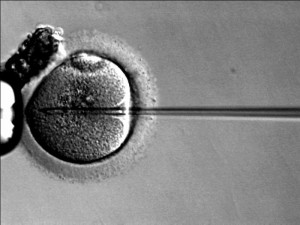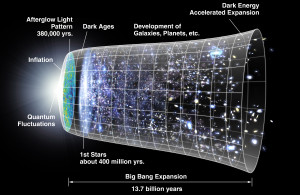This article is about 6 interesting questions you may have asked in your lifetime. In our previous article called 10 Weird Questions, we asked ten questions you just don’t ask everyday. With each, we not only stated the questions, but also attempted to answer them. Again, in this article, we will ask and attempt to answer them using extensive research from the most reliable sources around.
It is important to point out that some of the questions and answers in this particular article may be offensive to some readers. They may conflict with certain religious beliefs. However, although we respect all religious beliefs, we ensure that all of our answers are based on scientific evidence from reputable scientists. We will first begin with a very fascinating question regarding the Big Bang.
#1 What Came Before The Big Bang?

“Cosmos-animation Empty” by Geek3 is licensed under CC BY 3.0
Although astronomers are confident about what happened after the Big Bang occurred, there are several theories to what may have actually came before (if there was a before). Scientists believe that the Universe is about 13.82 billion years old. It all may have started with a big bang, but what was going on before that? Unfortunately, because the Universe was too hot and dense while in its infancy, the furthest we are able to look back is about 380,000 years after the big bang occurred.
A Couple Of Theories Regarding What May Have Came Before The Big Bang
#1 Our universe began within a black hole of an older universe. There was an older universe (but not our own) that had become a black hole. From that black hole, everything had formed.
#2 We see particles popping into existence in our Universe. It may be that after a very long period of time, a whole Universe’s worth of particles had popped into existence simultaneously.
Perhaps another theory could be based on what was recently observed by scientists. The BICEP2 team claimed to have observed possible evidence of inflation in the very early Universe. Although the claim may be debatable, interestingly, if it is true, it is very possible that our universe is just part of a much larger multiverse. It may be that universes are coming into existence all the time.
These are some interesting theories astronomers have today. In the future, we may have perhaps a very strong theory with plenty of strong evidence to support it. Or, is it that asking what came before the Big Bang is like asking what is north of the North Pole? We may never know the answer.
#2 Was There A First Human?

According to scientists, although it may sound like a paradox, there never was a first person. If you go back 20,000 years ago (Mesolithic man), you have humans. If you were to go 200,000 years back (Paleolithic man), you still have humans, but not like the human you would recognize. Go back 1.5 million years and you have homo erectus. There is no single point where one became the other.
You can never pinpoint the exact moment that a species came to be simply because it never did. Evolution is a very slow process. We are unable to actually see the change while it is occurring. This is just like how you used to be a baby and now you are older. There was never a single day when you had went to bed a baby and woke up as a full-grown adult. It just doesn’t work that way.
#3 What Is The Oldest Fossil Ever Found?

According to the experts, this basic microbe had likely existed in a kind of cluster. Although it is believed that each cell hosted individual life, it had effectively lived, worked and communicated as a single entity. This little (likely smelly) bundle has been compared to a small human society.
Where Was The Fossil Found?
Scientists had found the minuscule remains inside a lump of sandstone rock located in Western Australia. Interestingly, the remains are thought to be 300 million years older than the previous oldest example of life found on Earth. Perhaps scientists will one day find an even older fossil.
#4 What Is The Oldest Animal Ever Discovered?

It is amazing that Ming (1499 – 2006) managed to survive through several centuries. It was alive during the times of Galileo Galilei, Isaac Newton and every single U.S. president ever to take office.
How Were Researchers Able To Determine Ming’s Age?
Researchers calculated Ming’s age by counting annual growth lines in its shell.
#5 Why Do Men Go Bald While Women Don’t?

However, the enzymes don’t accumulate with age. What does occur is a very slow process, which is why men will usually experience hair loss with age. However, unfortunately for the men with more of these enzymes, they can start losing their hair at a much younger age. Although the amount of this enzyme one has is hereditary, it is still unclear whether it is determined by the mother’s or the father’s genes. Of course, it may be determined from both parents genes.
Although hair in women can start thinning out with age, why is it that most men will eventually lose the majority of their hair? The reason is because the male sexual hormone called testosterone. This hormone has the most significant impact on hair. The reason women can have thinner hair growth with age is because when they reach menopause, their existing levels of estrogen (the female sex hormone) will begin to drop, and their testosterone will start to have more effect.
An Interesting Theory Regarding Asian Men And Hair Loss
Although variations of hair loss are seen around the world, only 1 in 4 Asian men will start losing their hair by the time the reach age 50. Scientists believe that the reason is because Asian men have less of the enzymes that convert testosterone into dihydrotestosterone in their follicles.
Do Animals Go Bald?
According to a zoologist by the name of Per Jakobsen, even chimps will become bald. Interestingly, they become bald in almost the same way as humans do, with some males losing their hair atop their heads. Also, some male Tsavo lions in Eastern Kenya will grow bald. According to just one of many theories regarding the causes of baldness, bald heads may have once had an alpha function.
#6 Can A Child Have More Than 3 Biological Parents?

Many people say Saarinen has facial features from both her mother and father. But she also has DNA from a third parent. Saarinen has some mitochondria from another woman. Not only does mitochondria take part in creating the energy needed for all of our cells to properly work and keep the body functioning, but interestingly, they also contain a little bit of DNA. However, even though mitochondria does contain DNA, Saarinen does not consider the woman to be her third parent.
Saarinen was conceived through a pioneering infertility treatment located in the United States. Although it later became banned, the UK had different plans. In early February of 2015, the United Kingdom’s House of Commons voted (passed 382 to 128) to allow British researchers to pursue a new fertility treatment. This new treatment could potentially prevent certain kinds of genetic diseases. This new technique is called mitochondrial DNA replacement therapy. What this technique could possibly do is allow women who carry disease-causing mutations in their mitochondrial genes to give birth to genetically related children, but free of mitochondrial disease. The UK is now the only country in the world that will allow children with the DNA of three people to be born.
Although the new technique recently passed (by a long shot), it remains a controversial practice. It is controversial because it could possibly alter the DNA of an embryo, which could potentially pass on to future generations. Also, some scientists have argued that until there is more known about the possible side effects of the technique, it should not yet be performed in human patients.
More Information On This New Technique
Conclusion




